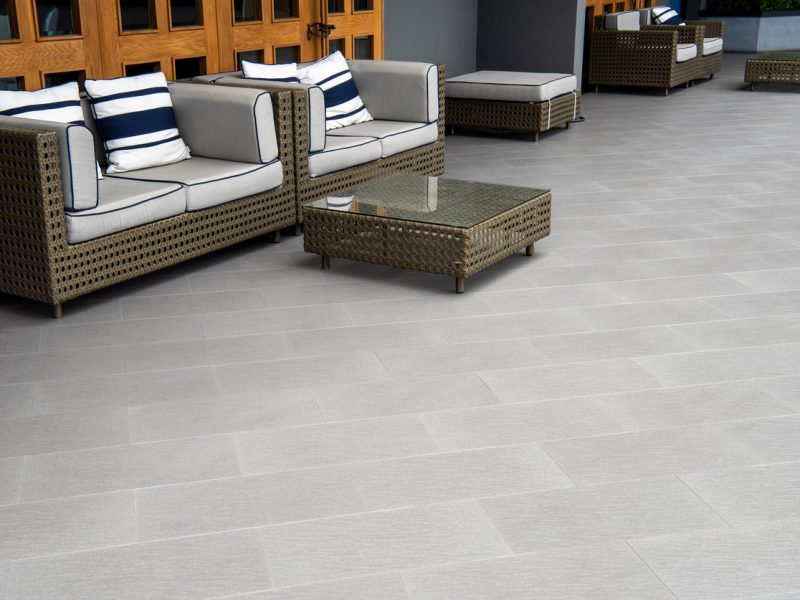What to Look for When Choosing Durable Outdoor Tiles
Choosing outside tiles will profoundly impact patios, walkways, and other areas of your exterior, so you must do it right! Choosing the right one, however, ensures they look good immediately and years down the line. By taking a few necessary factors into consideration, property owners and developers can design beautiful and long-lasting exterior spaces. This guide covers the key points to consider when deciding whether to follow.
Material Strength and Suitability
The durability of outdoor tiles in Melbourne or any city also depends on the type of material used. Porcelain and natural stone have stood out due to their durability and resistance to outdoor conditions. They endure temperature changes and lots of wear, making them reliable for patios and paths. Recommendation against patchy materials, susceptible to cracking or fading from weather exposure. Thoughtful selection minimises replacements and maintenance headaches.
Weather and Climate Compatibility
Tiles are invariably exposed to all kinds of weather. Where winters are cold, tiles must be frost-resistant and withstand freeze–thaw cycles. In the colder months, porous materials can absorb water, which can cause cracking. In warm environments, tiles do not need to be protected, as they should also not become too slippery or too hot when walked on. That could be driven by regional weather patterns, allowing us to make decisions on whether we can be outside without discomfort, or there may be other factors at play, such as safety and comfort levels.
Slip Resistance and Safety
It is common for surfaces outside to come into contact with moisture from rain or watering the garden. High-traffic areas can be improved with slip-resistant tiles that reduce the chances of falling and injuries. Textured surface tiles or tiles with anti-slip coatings provide traction, reducing the risk of falls and slips. However, they may look fancy, but they pose a safety hazard when wet. When safety is prioritised, outdoor spaces can be enjoyed by people of all ages.
Maintenance Requirements
Tiles that require less upkeep are time and energy savers in the long run. Few materials, like porcelain, take little more maintenance than a good scrub every now and then. Some natural stones require a seal to maintain their look and to prevent staining. This means homeowners should assess how much maintenance they are willing to do. Outdoor spaces require less effort to keep fresh when dirt and stains are less likely to set in, so choosing tiles that are resistant to such deposits can help.
Colour and Design Versatility
While aesthetic preferences often guide tile selection, practical considerations should not be ignored. Lighter hues are the best for shining and hiding dirtiness and wear. Some patterned or textured tiles can bring interest and depth to your outdoor areas. The right colour and style can enhance the architecture and landscaping already present, creating a cohesive environment. Works for many uses, including pool decks and garden paths, with versatile designs
Tile Size and Thickness
Tiles installed in outdoor areas should be heavy-duty and have the capability to withstand the pressure and movement without the worry of chipping. Ideal for pats or driveways, thick tiles provide extra strength & stability. Large-format tiles can have a clean, contemporary feel, but be a little more careful during installation, or they may crack.
For surfaces that are curved or uneven, small tiles or mosaics are best suited because they provide design flexibility. Selecting the right size of tile in conjunction with the ideal thickness will make certain that the tile satisfies your practical as well as stylistic requirements.
Installation Method and Substrate Compatibility
Installation plays a big role in how long outdoor tiles last. The substrate or bottom layer needs to be stable and fit for outdoor use. Even minor factors related to the installation process can affect the installation and result in issues such as shifting, cracking, and drainage problems. Certain tiles perform best outside with a specific type of adhesive or grout. Working with professionals or cutting chip sizes to manufacturer recommendations can yield successful results.
Resistance to Staining and Fading
Outdoor tiles are exposed to dry leaves, excess soil and sunlight over the day. Non-porous surfaces defend against stains that can occur due to spills, food and other organic matter after contact. UV-protected tiles do not fade, and the colours remain the same for years. Regularly cleaning and sealing them from time to time can help them last longer in terms of maintaining their appearance. Products with these characteristics help to keep outdoor areas looking great, no matter what Mother Nature throws their way.
Conclusion
Choosing durable outdoor tiles is more than just picking a colour or a pattern that you like. When you consider factors such as the strength of the materials to be used, weather suitability, security, and maintenance, you achieve a beautiful yet durable residence. Considering the installation requirements, stain resistance, cost, and sustainability, a more gratifying outdoor living space is created. Thoughtful assessment ensures that patios, walkways, and garden spaces will be utilised and appreciated for years to come.





Post Comment